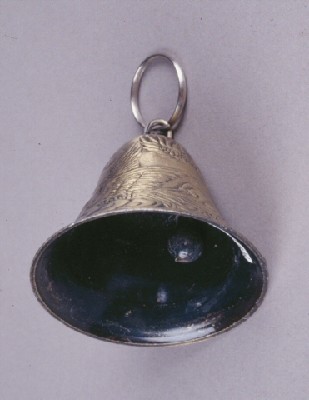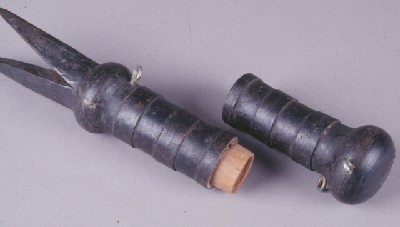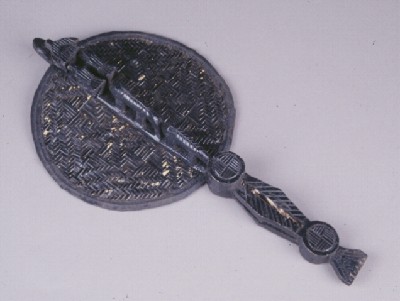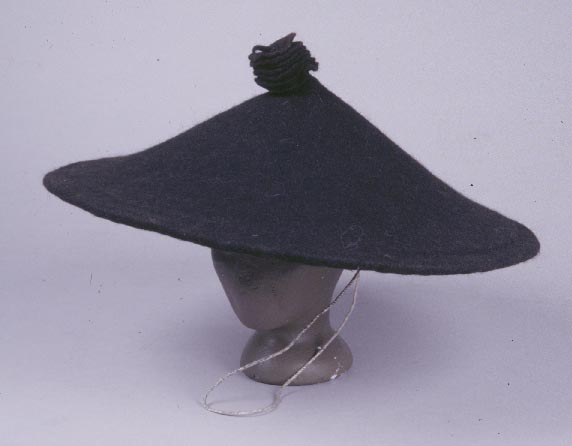Ritual Bell by Qubi Shyyi
Ringing to raise spirits
This ceremonial bell is used by the bimo, or priest, during rituals to raise the spirits or to suppress devils.
In the ancestor worship ceremony or the soul sending ceremony, the bimo rings the bell to raise the spirits in the other world to increase his power, come to enjoy the offering food, or to welcome the souls of the deceased.
In ancient priests' books, it is written that "the bimo beats the skin drum in this world, there is a sound of thunder in the world of the spirits. The bimo rings the bell in this world, there is a sound of clanging in the world of the spirits".
Description:
Bell is cast, has a ring at top and a single clapper inside. Bell is decorated with raised design showing a bird in flight and a dragon with snake. A leather string is attached to on the top. The eagle design on the bell is cut out in relief by the Nuosu priest himself.
See:
"Mountain Patterns" By Stevan Harrell, Bamo Qubumo and Ma Erzi. 2000. Fig 7.4 pg 53.
Back to Top
This ceremonial bell is used by the bimo, or priest, during rituals to raise the spirits or to suppress devils.
In the ancestor worship ceremony or the soul sending ceremony, the bimo rings the bell to raise the spirits in the other world to increase his power, come to enjoy the offering food, or to welcome the souls of the deceased.
In ancient priests' books, it is written that "the bimo beats the skin drum in this world, there is a sound of thunder in the world of the spirits. The bimo rings the bell in this world, there is a sound of clanging in the world of the spirits".
Description:
Bell is cast, has a ring at top and a single clapper inside. Bell is decorated with raised design showing a bird in flight and a dragon with snake. A leather string is attached to on the top. The eagle design on the bell is cut out in relief by the Nuosu priest himself.
See:
"Mountain Patterns" By Stevan Harrell, Bamo Qubumo and Ma Erzi. 2000. Fig 7.4 pg 53.
Back to Top





